How a Somerset farmer grows cereals without plough or herbicides
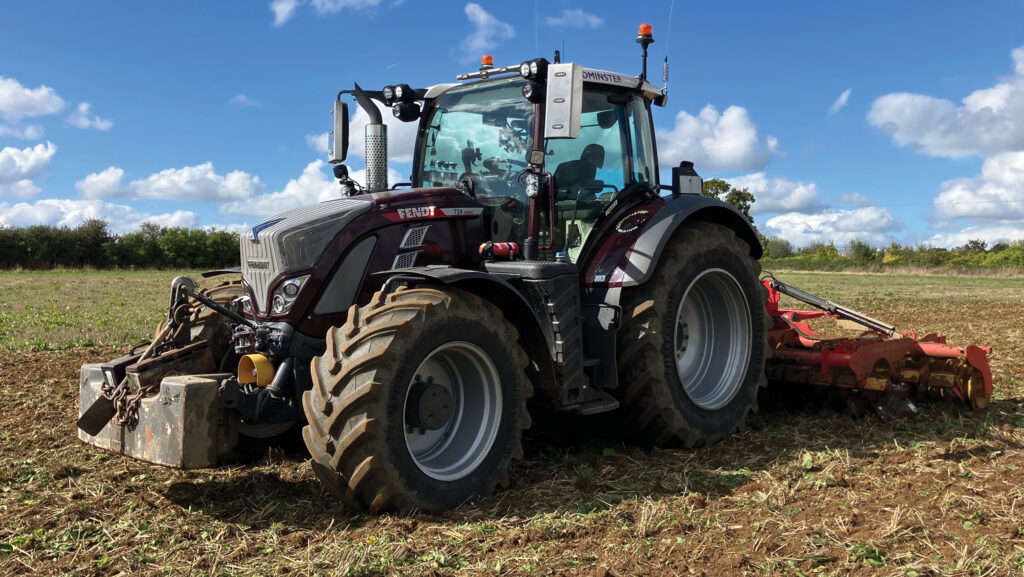 Tractor at Godminster Farm © MAG/Emma Gillbard
Tractor at Godminster Farm © MAG/Emma Gillbard Organic farmer Peter Cheek is successfully growing a range of cereal crops in a min-till system without the use of the plough or herbicides.
Instead, a series of strategic cultivations that prioritise soil health and keep on top of weeds have been used at the organic dairy and arable farm for the past seven years.
Peter has been the farm manager at Godminster Farm, near Bruton, Somerset, for 28 years, following the estate’s decision to convert to organic practice in 1998.
See also: How farmer uses biodynamic approach to establish crops
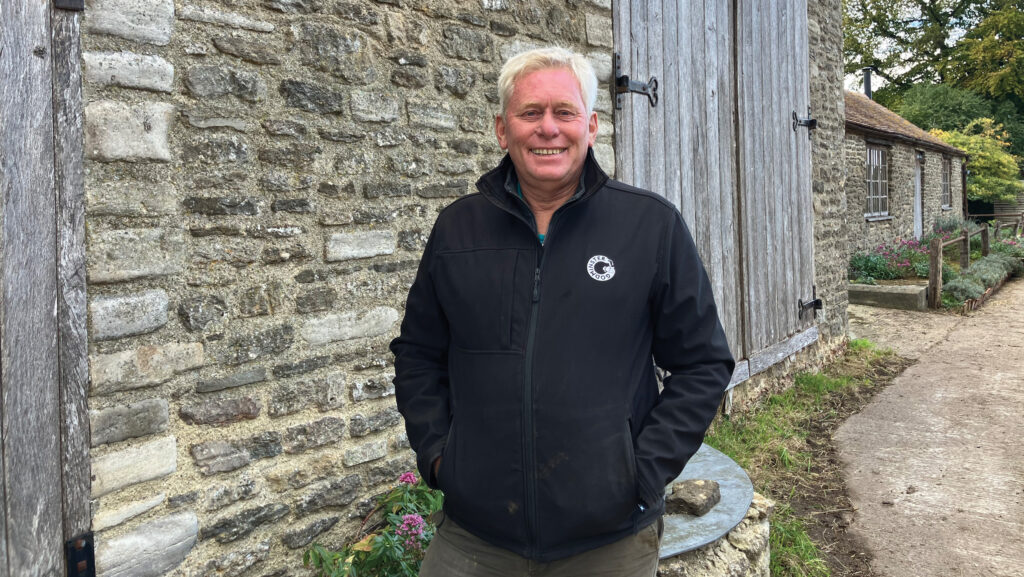
Peter Cheek © MAG/Emma Gillbard
Greater efficiency
Over this time, he has been working towards a minimum tillage system to improve soil structure and cut down on operational costs without sacrificing weed control or yields.
His current system is based on a Vaderstad Carrier with cross-cutter discs, which has greatly improved seed-bed preparation and weed control, as well as reducing labour and fuel costs.
For cultivating soils between arable crops, two quick passes with the cross-cutter discs post-harvest is sufficient to prepare the seed-bed for the next crop and control weeds.
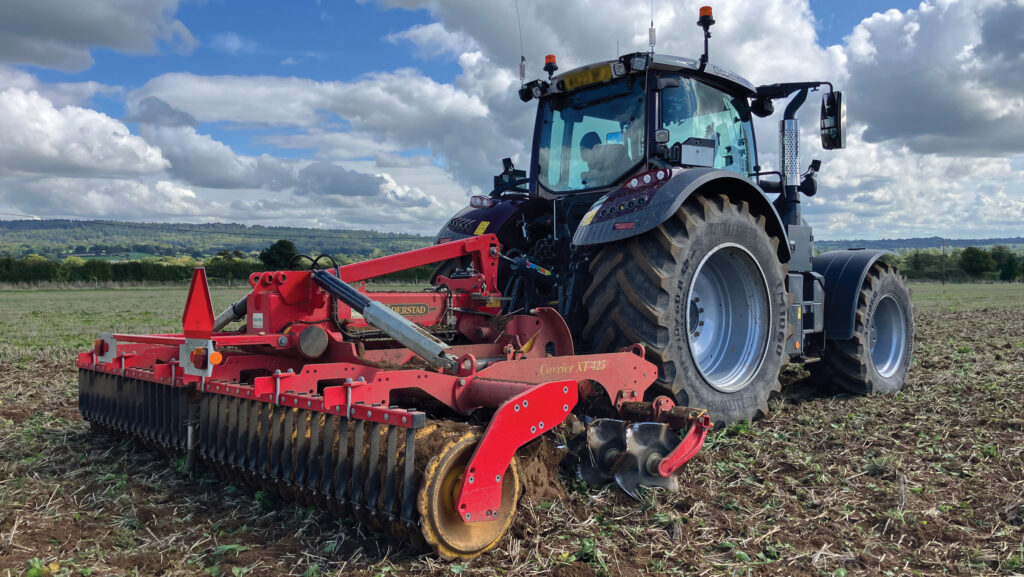
Tractor with cross-cutter discs © MAG/Emma Gillbard
When transitioning from grassland to arable, an additional pass with a set of Lemken discs is completed ahead of the two cross-cutter passes.
Previously, Peter used a standard flat disc on the Vaderstad Carrier, which required five to six cultivation passes to achieve adequate weed control.
“Some would argue why we wouldn’t just plough,” says Peter.
“Cost-wise, we were doing so many passes that it was just as expensive as ploughing, but I wanted to improve soil structure and avoid deep cultivations.”
Cross-cutter
When Peter came across the cross-cutter, he was able to substantially reduce the number of cultivations and operate faster.
He can cover up to 32ha/day at 18km/hour, compared to 12km/hour with the standard disc, with improved seed-to-soil contact.
Rather than mixing the weed seeds in with the soil, the cross-cutter glides through the surface at a shallow depth of 3cm.
Instead of throwing the soil backwards like the standard disc, it moves the soil upwards. The heavier soil particles fall faster than the lighter weed seeds, so the seeds land on top.
This exposes them to light and warmth, prompting faster germination and allowing for a quicker, more effective kill.
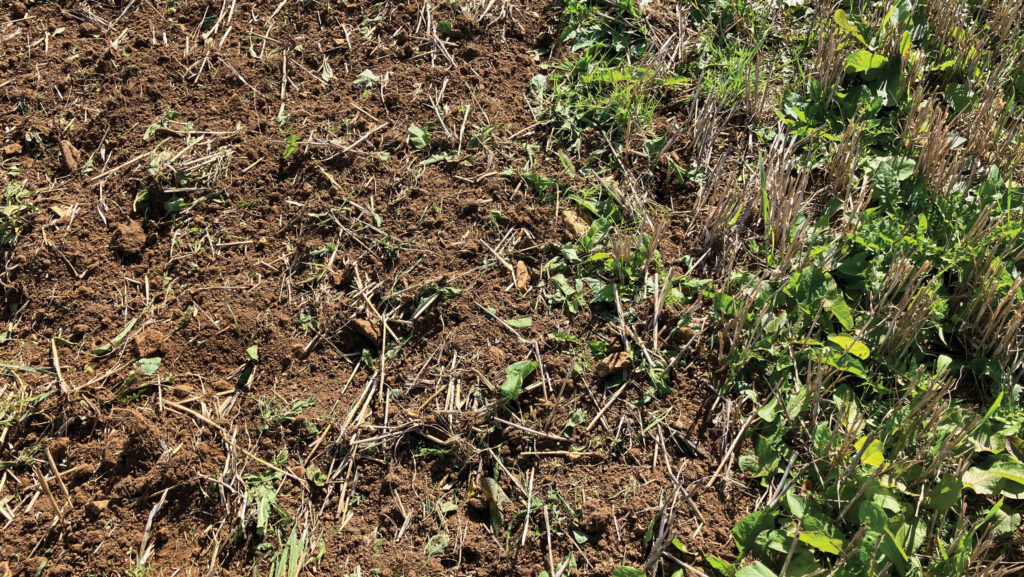
Soil with cross-cutter versus control © MAG/Emma Gillbard
Crops grown
Peter grows winter wheat, winter oats, beans and rye on the 300-cow dairy unit.
Key weeds of concern include charlock, thistle and dock.
He used to grow oats for White’s Milling in Ireland, but now prefers to channel everything through the dairy herd.
The focus has shifted to growing more home-grown feed and adding diversity to crops, whether that’s variety blends or bicropping, such as peas and barley.
“We’re growing wheat blends of Extase and Mayflower.
“Now that we’re no longer limited by needing specific varieties for milling contracts, we can grow blends of oats like Mascani and Cromwell,” he explains.
Herbal leys make up a significant proportion of the farm and have been a mainstay for more than 10 years. The diverse mixes have played a crucial role in weed control.
Peter notes chicory has had a huge impact on controlling docks due to its natural ability to compete for root space, water and nutrients.
By staying on top of weed pressure and capitalising on system diversity, he is aiming for an ambitious yield increase of 1t/ha across the 140ha of arable land within the 450ha unit.
Winter wheat currently averages 4.5-5t/ha and oats 4-5t/ha, but he believes this can improve with ongoing refinements to the system.
Rolling strategy
Cereal crops are no longer rolled after drilling. Working closely with soil specialist Tom Tolputt, of Terrafarmer, the aim was to allow the soils to breathe more freely.
Importantly, rolling is still used after establishing herbal leys, where good seed-to-soil contact is critical.
“We have not seen a visual difference in crop establishment or a drop in yield by not rolling cereal crops in, but it has saved time and fuel – and hopefully improved soil structure,” says Peter.
Initially, it was a huge mindset shift. Peter feared issues with slugs, leatherjackets and birds.
Fields were swamped by crows, but instead of harming the crop, the birds were eating the pests and naturally taking care of the problem.
“You must learn to make your own decisions and have trust in your system,” he says.
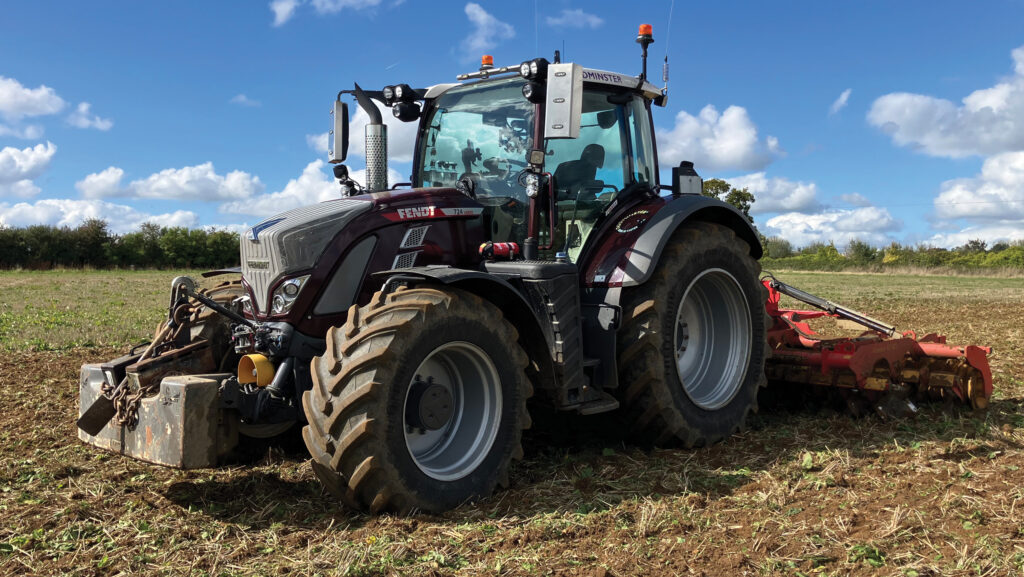
© MAG/Emma Gillbard
Peter aims to get cereal crops drilled by mid-October to give them the best start.
“I cannot see the sense in getting crops into the ground late, drilling into November when soils are cold and wet,” he says.
As Soil Association arable and soils adviser Jerry Alford points out:
“In organic systems, weeds tend to germinate later in the season, so conventional wisdom says to drill later. But that’s not always the best solution.”
Peter’s rotation includes winter wheat, winter oats, followed by a wholecrop trio of beans, oats and rye.
A second rotation consists of four years of herbal leys, then winter wheat.
This is followed by a cover crop of Westerwold/vetch or triticale/hairy vetch, which is grazed by the cows before wholecrop peas and barley, which is usually undersown with a herbal ley.
The drill of choice is a Vaderstad Rapid, but Peter has a power harrow drill if needed. Cereals crops are planted at a rate of 220kg/ha.
Subsoiling is not ruled out, but this is only done selectively, which would otherwise risk bringing up buried weed seeds. Inspection pits are dug to assess soil condition.
Tackling challenges on new land
On a newly acquired block of land, ploughing has been reintroduced due to persistent issues with couch grass, fescues and dock leaves.
“The plough still has an important place, particularly where the weed burden is extreme,” Peter explains.
The dock infestation here will be addressed with a herbal ley to naturally suppress it.
Peter believes dock infestations can indicate deeper issues, such as compaction and mineral imbalance – particularly limited calcium.
“One thing I have learnt over the years is, don’t be too fussy about a few weeds,” Peter says.
“Many of them are palatable for the cows, and that’s one thing I’ve come to appreciate from working organically.”
Tom recommends occasional ploughing as part of a healthy rotation.
“Ploughing about one year in five can increase soil carbon stocks. However, ploughing more frequently than that risks depleting carbon and damaging fungal networks,” he says.
Jerry adds: “Research shows that mycorrhizal fungi can recover after one year of ploughing, but if ploughing two years in a row, it can disrupt networks with little ability to recover,” he says.
Going forward, Peter is trialling the use of biological inputs such as an organically approved gypsum and fish hydrolysates, which he hopes will further improve soil biology.
Compost as a key tool
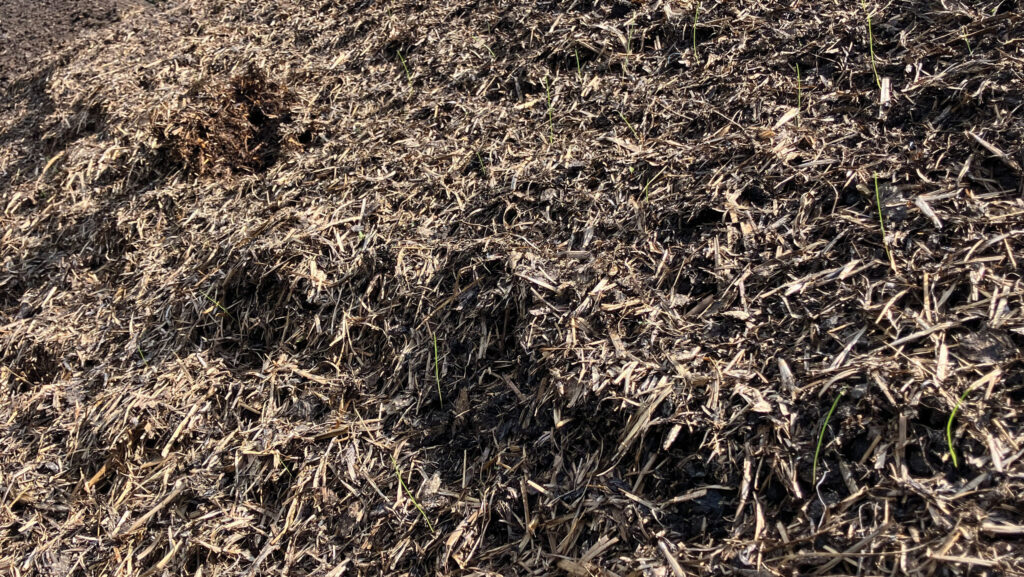
Compost at Godminster Farm © MAG/Emma Gillbard
Compost has been used on the farm for the past 15 years, as a means of enhancing muck nutrient content and reducing weed pressure.
In the early days, Peter Cheek used a JCB bucket to turn the muck, but found the compost wasn’t reaching high enough temperatures to kill weed seeds, which allowed them to spread.
He then hired a contractor, but has since invested in a second-hand compost turner to manage it himself.
Muck from the sheds is tipped into windrows, which are turned four times by the machine.
The compost is applied ahead of winter oats and winter wheat, where it has a noticeable effect on both soil health and weed suppression.

